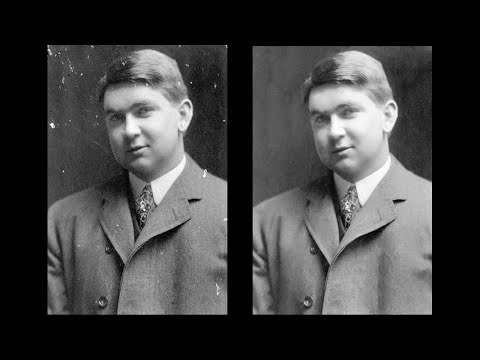1. Import your original photo into Photoshop.
Bring your scanned image into Photoshop. Your image will be your background layer. Lock it and make no adjustments to this layer.
This empty layer is where you will make all your adjustments. When you place your adjustments on a separate layer from the original image it means you can make non-destructive edits — they will not alter the original image, just lay adjustments on top of it.
3. Use the Spot Healing Brush to erase creases, fix tears in the photo or even remove blemishes caused by water damage and mould damage.
In the options in the top toolbar, click Sample All Layers and select Content Aware from the available types. Then, use the Spot Healing Brush to go over the areas you want to heal.
4. Use the Clone Stamp tool to smooth over fine details or areas with a lot of texture.
Hold Alt (or Option on Mac) and click the area you want to sample. Make sure you select “Current layers and below” as you use this tool so you can work nondestructively.
5. Colourise your photo using Neural Filters.
If you have a sepia that you want to colourise, create a new layer that contains all your previous layers by clicking Control + Alt + Shift + E on Windows or Command + Option + Shift + E on Mac. Then click Filter › Neural Filters › Colourise. Set the blending mode to Colour so you can make non-destructive edits on the new, colourised layer.
6. Export your restored photo.
You can save your image as a JPG, TIFF, PNG or other of your choice.
Pro tips for photo retouching.
To get the most out of your photo enhancements, follow these expert tips.
Photoshop expert and educator Jesús Ramirez recommends you use with the Spot Healing Brush and Clone Stamp tools. It’s much easier to make natural strokes and fine adjustments with a pen than with a mouse or track pad.
“It’s better if you have a small brush and make small strokes instead of painting over giant areas all at once,” says Ramirez. This helps your adjustments look as natural as possible.
Instead of keeping all your adjustments on a single layer, Ramirez recommends separating them out to keep things organised. The more you can organise different adjustments, the easier it will be to go back and make specific edits later. “You might have one layer for the face, one for the hair, one for the background and so on,” says Ramirez about working on a portrait.
Refine your colour corrections.
In many cases, the Neural Filter will do an excellent job of all on its own. But if you want to take your colorisation techniques to the next level, you can use the Colour Balance tool to adjust the tones in your image. You can make a Curves adjustment layer to control contrast. Or you can let Photoshop do work for you. To do this, create a Curves adjustment layer, select Auto Colour Correction Options and click Bind Dark & Light Colours. Make sure to select Snap Neutral Midtones, then click OK.
Don’t let time win the war against old photos. Use these simple tips to ensure classic images can inspire nostalgia for years to come.

